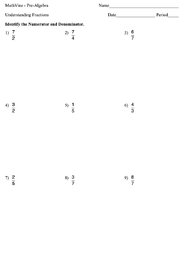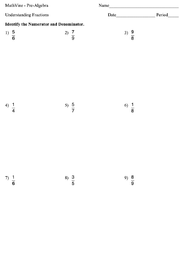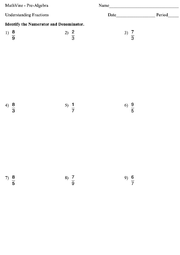Understanding Fractions
Introduction
Fractions are a way of expressing parts of a whole. We can understand this by looking at the figure below:

The complete circle is the whole. In this example, it has been divided into a total of 4 parts. So to express the whole circle as a fraction, we would need all 4 parts: 4/4. If we wanted to express half of the circle as a fraction, we would need only 2 of the 4 parts: 2/4. The reciprocal of a fraction is simply the fraction turned upside down. I.e. the numerator becomes the denominator and vice versa.
Terms
Lesson
To understand fractions, we should try and look at the big picture. 7/8 does not mean anything until we understand that 7/8 is 7 parts of something that has been divided into 8 parts.
For the lessons that follow, we will need to know the parts of a fraction and how they relate to each other. We can see that fractions can be written in numerous ways:

So using 7/8 as an example, we see that 7 is the numerator (the number being divided or the number of parts being taken from the whole) and 8 is the denominator (the number doing the dividing or the number of parts in total).
To find the reciprocal of a given fraction, we re-write it so that the denominator is the numerator and vice versa. So if we are given 4/9 and asked for its reciprocal, the answer would be 9/4.


